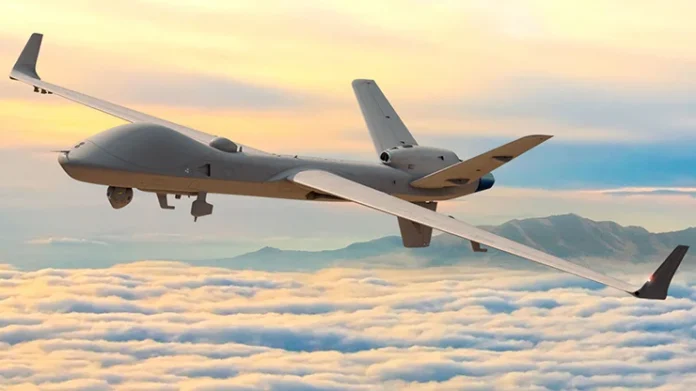New Delhi: India is expected to finalise a significant deal with the United States for 31 weaponised MQ-9B Predator drones with signing of the agreement next month. Currently, the defence ministry is currently finalising a draft note for the finance ministry before seeking approval from the Prime Minister-led cabinet committee on security.
The Ministry of Defence’s contract negotiation committee report has been accepted for this government-to-government deal, originally quoted by the US at $3.9 billion (over Rs 33,500 crore). Prime Minister Narendra Modi is scheduled to visit the US for the Quad leaders’ summit hosted by President Joe Biden in Wilmington, Delaware, on September 21.
A media report quoting a source said that the contract should be inked in mid-October. The costing, setting up of a MRO (maintenance, repair, overhaul) facility here, performance-based logistics support and other such issues have been finalised after hard negotiations.
The 31 drones will be assembled in India though the deal does not include a direct transfer of technology. The drone manufacturer, General Atomics will invest in India and source over 30 percent of components from Indian companies. Additionally, General Atomics will provide expertise to DRDO and others to develop similar drones indigenously.
The MQ-9B drones are capable of flying for almost 40 hours at altitudes over 40,000 feet. It will come equipped with 170 Hellfire missiles, 310 GBU-39B precision-guided bombs, navigation systems, sensor suites, and ground control systems. India plans to also equip these drones with indigenous weapons such as the naval short-range anti-ship missiles being developed by DRDO.
Designated for the Navy (15 Sea Guardian), the Army and Air Force (8 Sky Guardians each), these drones will serve in long-range intelligence, surveillance, reconnaissance missions, and anti-warship and anti-submarine operations. The drones will enhance India’s surveillance and defense capabilities and this capability is crucial given the increasing presence of the Chinese Navy in the Indian Ocean Region.
Aiming to receive the initial deliveries of these drones in two to three years, India will deploy thee drones at ISR command and control centres in Arakkonam, Porbandar, Sarsawa, and Gorakhpur to monitor both maritime and land borders.
Raksha Anirveda's editorial desk team brings in the collective experience of creative professionals - a fine mix of senior copy editors, writers, proofreaders and designers. Working as a team, they continuously create, manage, and curate content to sustain the magazine's profile and reputation in line with market trends and achieve magazine's goal.





